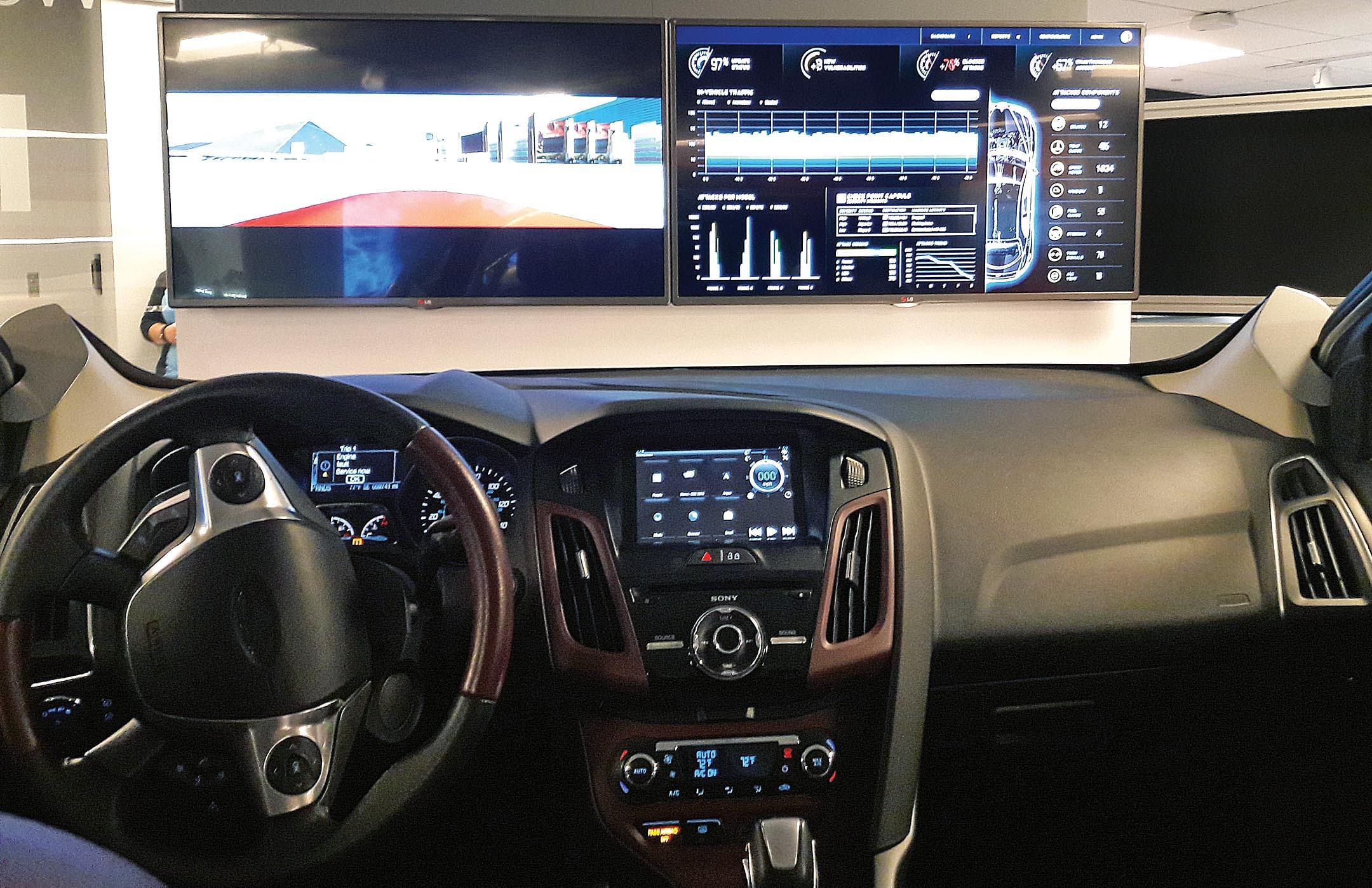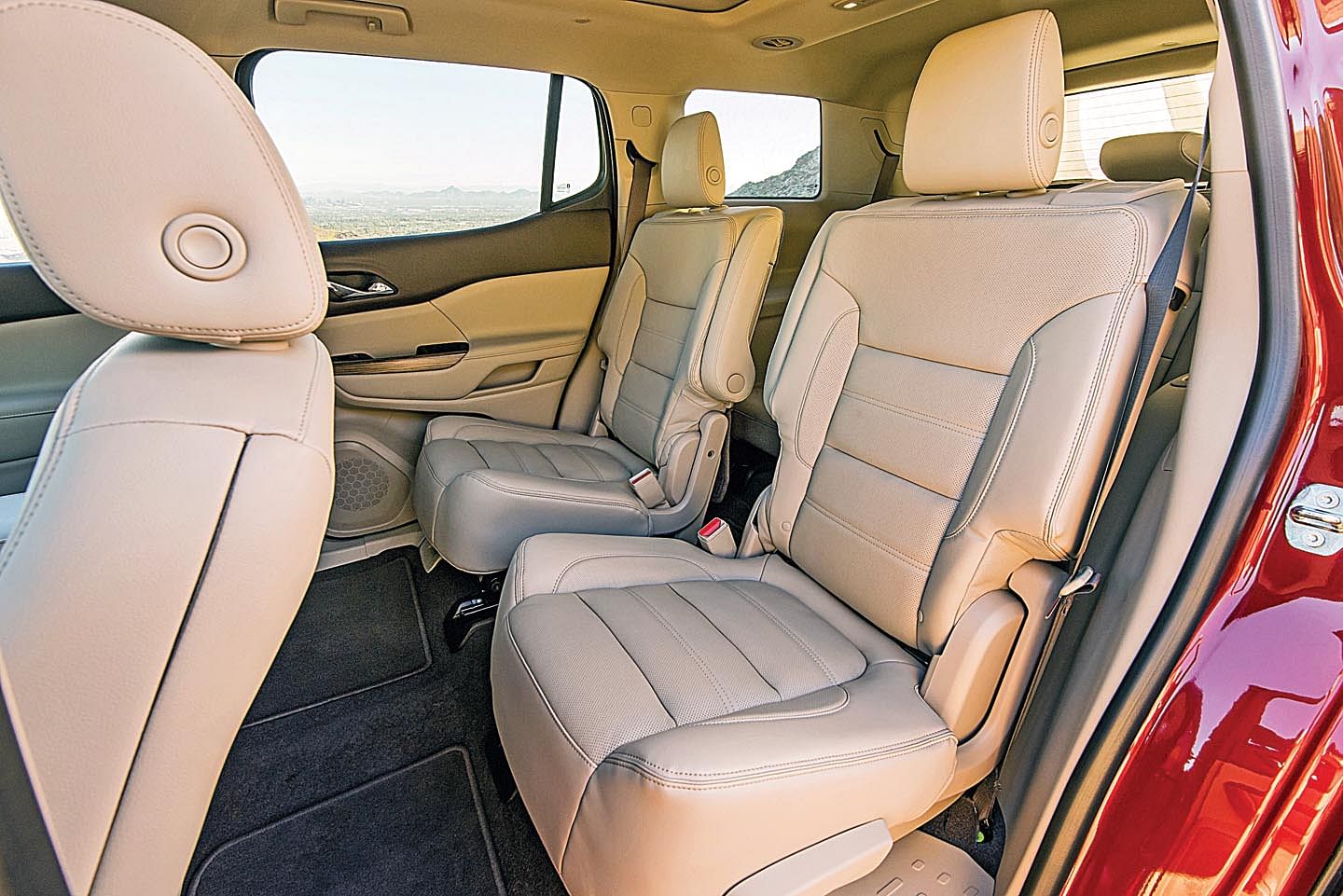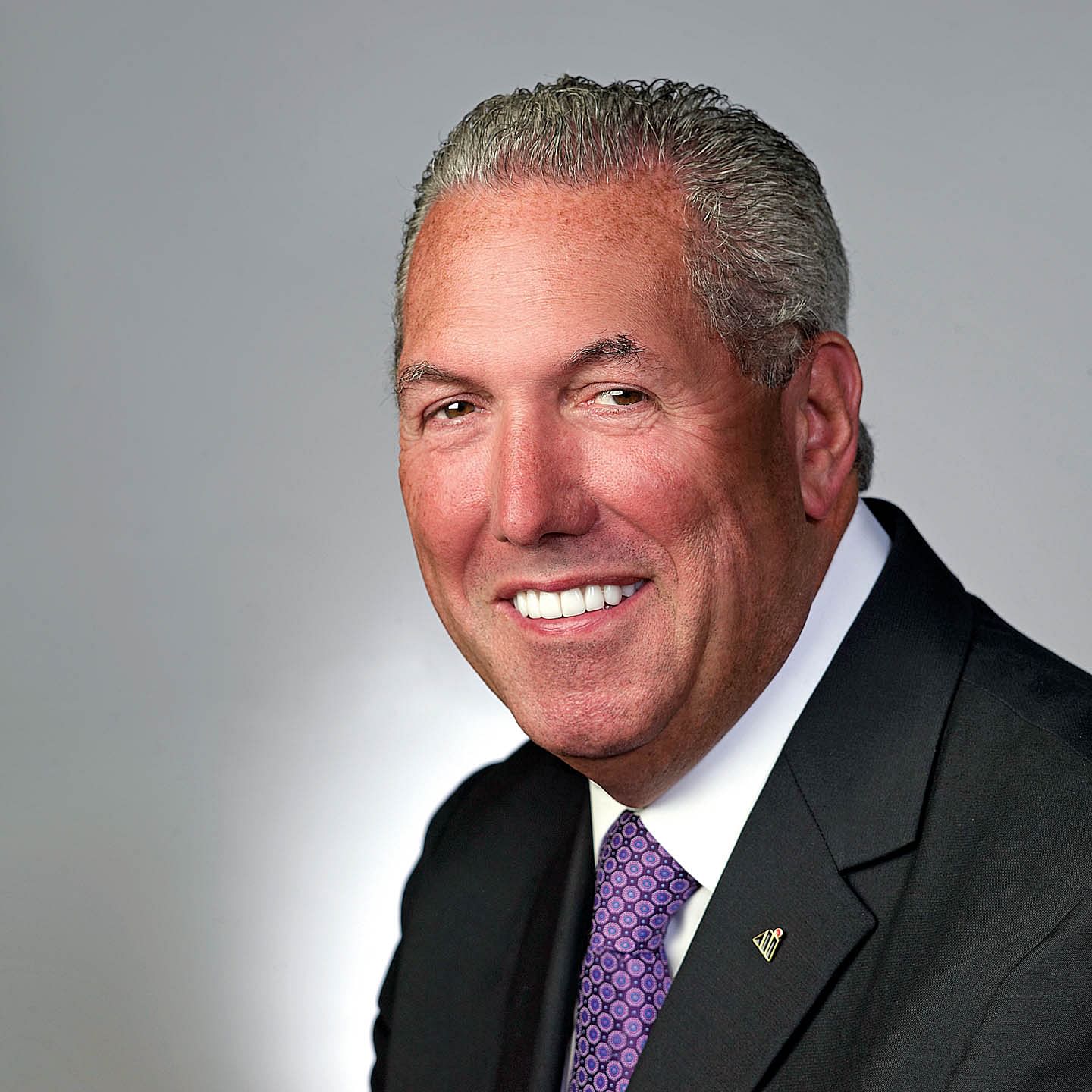Magna sees opportunities in new mobility solutions
Magna International, North America’s largest and the world’s third largest supplier, sees unprecedented changes in the automotive world during the coming years. Here's looking at the key areas that Magna’s betting on.
Magna International, North America’s largest and the world’s third largest automotive supplier, sees unprecedented changes in the automotive world during the coming years. Sumantra B Barooah finds out what are the key areas that Magna’s betting on.
"We are going to see more changes in the next 15 years in the auto industry that what we have seen in the last 50 years,” says Jim Tobin, chief marketing officer, Magna International. And there are three key trends – electrification, autonomy and new economy – that will bring about these changes, some of which have already started shaping the future of mobility. It is projected that by 2050, 70 percent of the global population is expected to live in urban areas. China and India, expectedly, will lead the trend of urbanisation. By 2050, 875 million people are expected to migrate to urban areas in India alone. This market has adopted and is witnessing a rapid growth in shared mobility services.
So, is the global trend of shared mobility solutions a threat or an opportunity for the automotive industry? Magna sees it as an opportunity. “We believe miles driven per vehicle will increase,” says Ian Simmons, VP (R&D), Magna International. With the growth in shared mobility, he says that by 2030, there would be an 80 percent rise in global miles traveled. “Mobility of the future offers significant opportunities for suppliers,” says Simmons.

One such opportunity is in the cyber security area. As autonomy or cars grow, vulnerability to cyber attacks also increases. To offer solutions to vehicle OEMs, Magna has struck an alliance with an investment in Israeli company Argus Cyber Security. A first-hand experience in a simulator gave me a good idea of the risk that cars with a high level of connected features can get exposed to, without an effective cyber shield. A simulated attack resulted in me losing control over the car.
The simulator and a range of Magna exhibits at its centre in Troy, Michigan, showcased the company’s breadth of offerings for OEMs. They ranged from a mirror with a camera, dual-clutch transmissions, CVT plungers, seating systems to multi-material lightweight vehicle body structure. So, what would be the three key areas of focus for Magna? “The three major product areas that I would say are top priority for us would be – drivetrain, body architecture, which could be plastic, steel or aluminium, and then overall electronics which includes our vision systems,” says Tobin.
With electronics content consistently growing in cars, Magna sees major opportunities in the areas of safety, powertrain and body and security. The global automotive electronics market is pegged at $58 billion (Rs 366,386 crore). Magna is focusing on $35 billion of it through solutions in the above-mentioned areas.

A recent Magna innovation is the Pitch Slide seat which is specifically engineered for second row passenger side of the vehicle, while the Tip Slide is made for the second row driver’s side.
Two new introductions under its seating and vision systems divisions are the EZ entry seats and the Eyeris driver-assist technology. The Pitch Slide and Tip Slide 2nd Row EZ Entry vehicle seats are smart solutions designed to offer the SUV owner easier accessibility and greater space flexibility. The Pitch Slide seat is specifically engineered for the second row passenger side of the vehicle, while the Tip Slide is made for the second row driver’s side.
Using Magna’s mechanisms, i-DiSC 4 recliners and META tracks, the seats release and move forward to maximise the opening for passengers to enter and exit the vehicle’s third row of seats. The Pitch Slide seat features an increased range of motion to create a wider opening, and also functions without having to remove an installed child or infant seat – key attributes to locate on the passenger- or kerb-side of the vehicle based on typical consumer use. The seats have been introduced on 2017 model-year vehicles, with Pitch Slide recently making its market debut with GMC.
Magna‘s Eyeris driver-assistance technology supports the Trailer Reverse Guidance system jointly developed by Magna and Ford. Image-processing software determines the angle between truck and trailer and provides the most appropriate view to the driver, depending on the trailer’s trajectory. Three high-resolution cameras and a colour-coded bird’s-eye diagram of the truck help warn the driver of potential jackknife conditions. Additional technology shows the driver the required steering wheel movement for reversing in a straight line. This technology debuts with the 2017 Ford Super Duty Trailer Reverse Guidance system.
CAUTIOUS INDIA STRATEGY
Magna has been present in India for a while now, with manufacturing or technical facilities in Pune, Chennai, Bangalore and Sanand.
Tobin, who is also the president of Magna Asia, says that Magna is very cautious about investing in India at this point. “We still think more infrastructure has to go in into India before it grows. I think the outside projection is to get to seven million units by 2022-23, but we are at about half of that right now,” says Tobin. He, however, mentioned in his presentation that two of the 16 plants that Magna plans to set up in 2017-18, will be in India. One of them will be a transmission manufacturing plant in Sanand.
“We are investing in India for the future when it hits that (inflection) point leading to a sustainable market for the bigger vehicles. So, the question is, when is it going to get to that point,” says Frank O’Brien, executive vice-president, Asia Pacific, Magna International. In
the coming 10 years, O’Brien sees India “certainly” to be a much bigger market for cars. And though they may not too large sized, he expects a “lot of content” in them. It won’t be surprising if a fair, if not significant, amount of the content would be of advanced technologies that Magna itself is preparing to offer global OEMs.
Q&A: JIM TOBIN, CHIEF MARKETING OFFICER, MAGNA INTERNATIONAL

Does the challenge of increasing cost pressure get magnified for Magna, as it supplies clusters of parts to OEMs?
We have no problem focusing on cost. We don’t want to talk about price. There’s a difference there. We want to focus on cost. Nissan has a term — TDC (Total Delivered Cost). So, we work with our customers on the cost side, and one area that customers are bringing us in much earlier is in product development.
One differentiator that Magna has, which I feel is a differentiator with others, is our depth in engineering. We have product engineering and manufacturing engineering. As we are way up front in product engineering, we also have the ability to make sure it’s affordable from a manufacturing perspective.
So, we have got concurrent product to process going on because many times in our industry a customer will come out and say, “Here’s my product, please make it.” It’s so expensive because we had no input. So, now we are getting up to the advanced engineering, our manufacturing process and materials to make sure we come out with the best solution. When customers get to job one, everybody has done the best they can to get the best total cost into the product. And we are seeing more and more of that.
If the customer comes to us with the big hammer and just wants price reductions, it doesn’t work. You saw that in North America, it drove many companies into bankruptcy a few years ago.
For the constant volume, the variants are increasing. How does a system supplier like you approach this challenge?Buying planning, from a production/ volume perspective, is a critical piece of our planning process. We are more cautious than we are optimistic. But contractually, we do have to meet our customers’ volumes. But we can do that in many different ways. And then, in some areas of the world, like India, the production volumes haven’t materialised the way they were anticipated.
Now, what we are doing in many areas of the world is that we can put in a process that’s flexible from a volume perspective. So, we can start with an initial volume, and we have the geometry stations that you need to set a geometry, say in a body shop, but then you can for a volume of say, 50,000 units, but then as you can look out into the consumer market you can expand that capacity very easily.
If you look at North America, most plants run at 100 percent capacity. The problems are not necessarily us. It’s some supplier down from us. So, our supplier management is very important.
If you go to China right now, the Chinese OEMs are starting to increase their production, which is good because their average capacity utilisation was only 35 percent if you look at the past few years. In comparison, the Japanese, Western and Korean manufacturers were running at almost 100 percent capacity. So, at buying planning we have a lot of rigorous discussions with our customers up front.
What is the capacity utilisation in China now?
Across the multinational joint ventures, it is between 95 and 105 (percent). The Chinese OEMs are still struggling. At best, I would speculate, it’s probably 60-65 percent. So, I heard when there’s 30 million units of production in China there will be 38 million units of capacity in China. There’s going to be some consolidation, we think, somewhere down the road.
With the passenger vehicle consumer shifting from owning to sharing cars, how is Magna preparing for new mobility solutions?
We continue to monitor the mobility side. We continue to watch consumers and the shared driving model.
What are your new innovative solutions for them?
There are many things we are working on. We do believe that shared mobility could get the consumer one mile he has get to get from his/her house to the shared mobility, and then at the end he/she needs to go one to two miles in the city to where he’s/she's got to go.
So, there’s some mobility technologies we are looking at in that area. But we don’t see shared driving as a big impact to us right now. As regards autonomous driving, there are many different kind of technologies that we are working on, that we have in-house or partly outside.
With what’s going on, we are going to see more changes in the next 15 years in the auto industry that what we have seen in the last 50 years. But regulatory and legislative will play a big part of these
new technologies coming into play.
Would the way manufacturing is done also change?
We could. We are looking at those things now.
This feature was first published in Autocar Professional's december 15-2016 anniversary issue
RELATED ARTICLES
Hybrids Gain Ground as India’s EV Transition Faces Infrastructure, Cost Hurdles
Slower-than-expected EV adoption, tight CAFE norms and ever-present efficiency demands are giving hybrids a second wind ...
Continental Taps India as Global Hub for R&D and Manufacturing
Continental’s spin-off of its automotive business into AUMOVIO marks a strategic shift, placing India’s engineering and ...
India's EV Story: Promise, Progress, and Challenges
Amid the fanfare of new launches and soaring expectations, mainstream buyers remain hesitant.





 16 Feb 2017
16 Feb 2017
 19691 Views
19691 Views





 Ketan Thakkar
Ketan Thakkar


 Shahkar Abidi
Shahkar Abidi


